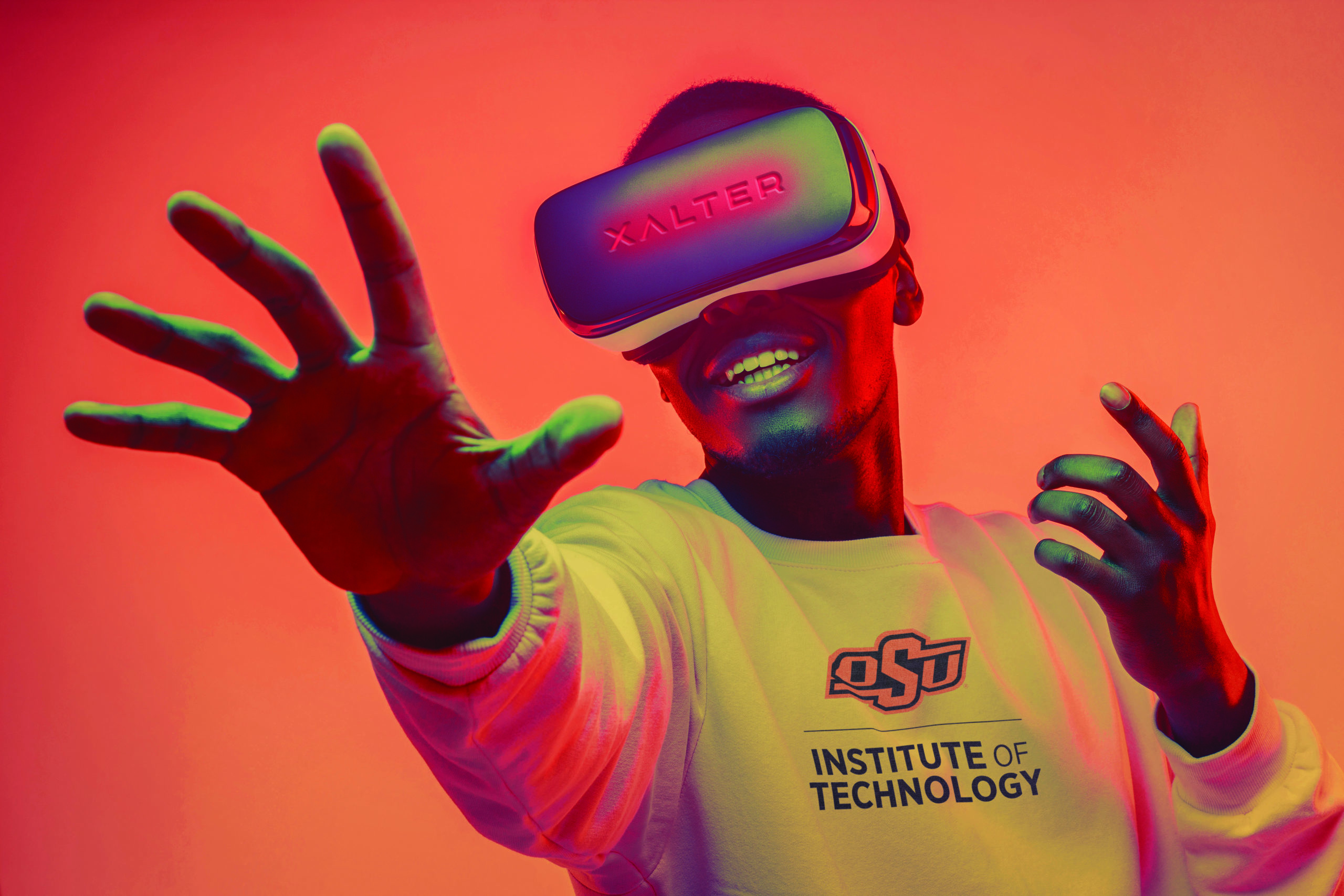Okmulgee, May 16, 2022:
Oklahoma State University Institute of Technology is taking the lead in filling the skills gap by reinventing the delivery of hands-on training with the next technology platform—Extended Reality (XR). The institution is creating a digitized version of reality commonly known as the “Metaverse” and plans to be a pioneer in embracing these new possibilities in education.The OSU Institute of Technology Metaversity is the “digital twin” of OSUIT in the Metaverse. It serves as a single deployment platform for all Virtual Reality (VR) learning modules, VR experiences and other Metaverse-related tasks for OSUIT students, faculty and staff. The Metaversity will consist of various virtual spaces, including the quad, virtual schools and virtual workforce development offices.
“It’s an exciting time to be in higher education. We have a unique opportunity to reimagine and reinvent the way applied, hands-on learning is conducted and prepare it for the future,” said OSUIT President Bill R. Path. “As a campus known for hands-on instruction, OSUIT will leverage XR’s potential and examine the expansion of learning opportunities beyond the traditional lab environments.”
The institution currently has six VR modules under development with plans to create additional modules across multiple subjects and programs. To support instructional delivery of the modules and the Metaverse, OSUIT has invested in Meta Oculus Quest 2 all-in-one VR headsets to begin student and faculty implementation. The initial course modules, which began development in early 2021, are currently in beta testing. Pilots are set to start this summer for an anticipated fall term implementation.
The six current VR modules include Culinary Place Settings, Culinary Service Steps, Engines: Basic Function and Operations & Service, Gas Compression Skids, Instrumentation Engineering and an Escape Room
While the COVID-19 health crisis has exposed a significant gap in instructional delivery and educational access, it has also created opportunities for higher education to reshape and reimagine teaching and learning, introducing today’s college students to the high-tech virtual training labs of tomorrow.
XR-Curriculum Students learn four times faster, retain four times more information and routinely demonstrate higher proficiency of 30% or more in a reduced amount of time.
XR-Centric Applied Technology curriculum includes traditional video, immersive video, full digital room-scale simulations, artificial intelligence and significant data research to develop a workforce ready to go on day one.
This visionary project will allow students and instructors to assemble remotely in virtual lab spaces that have been customized with three-dimensional, interactive representations of all the tools and equipment typically found in instructional labs on campus.
OSUIT has partnered with Tulsa, Oklahoma-based XALTER, a 21-year-old, award-winning media and technology company to re-design what is possible in an applied technical training campus. This team brings together renowned instructional designers, researchers and data scientists alongside award-winning visual artisans who are committed to creating XR-integrated curricula.
What is unique about this project and OSUIT’s curriculum is that the creation of each is informed by industry partners and the current workforce landscape.
“OSUIT partners with industry to inform curriculum updates, and we have done the same with these VR modules,” said Path. “We have the opportunity to partner with industry and create multi-purpose modules for instruction and training their current workforce.”
Companies can partner with OSUIT to develop a roadmap of VR models or “digital twins” of OEM equipment, pipeline infrastructure, plant operating sites, etc. XALTER will build these for OSUIT to use in the classroom, and companies can use them in daily operations for the training, product R&D, virtual sales demos and customer training and onboarding.
The XR project began in 2020 with the award of a 5-year U.S. Department of Education Title III Part A Project grant, providing the institution with more than $2.1 million in federal funding. A portion of the grant has helped support the development, integration and investigation of XR technology into OSUIT’s academic offerings.
The multi-year, multi-million-dollar vision includes virtual classroom learning content, virtual labs and virtual equipment/site simulators to deepen engagement and retention.
“This collaborative project will help OSUIT expand its inclusiveness and reach by allowing students to learn in virtual reality, empowering distance learning and adapting to ever-changing learning conditions,” said Path. “VR doesn’t replace hands-on learning – it accelerates it and allows OSUIT to continue to be the leader in technical education.”
To find out how you can integrate virtual reality into higher education, contact Kevin Anderson, kevin@xalter.com.



